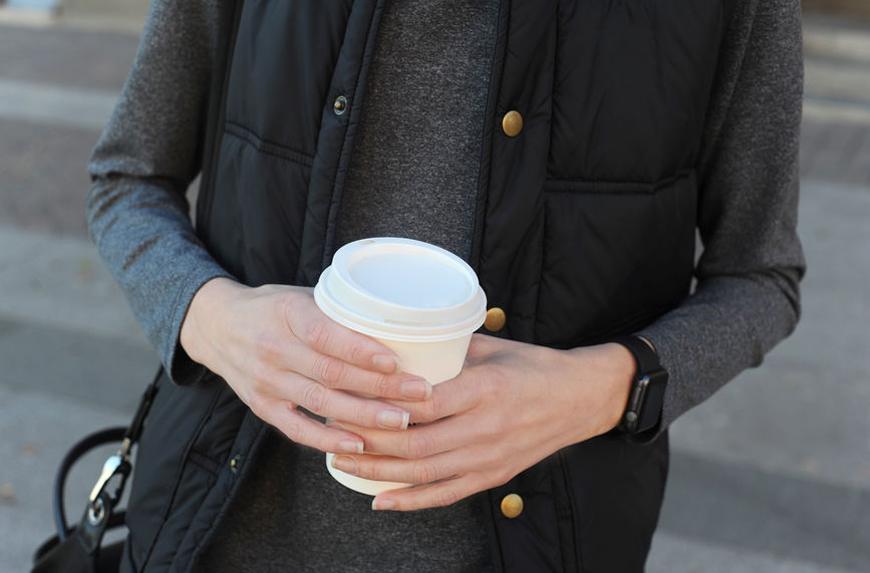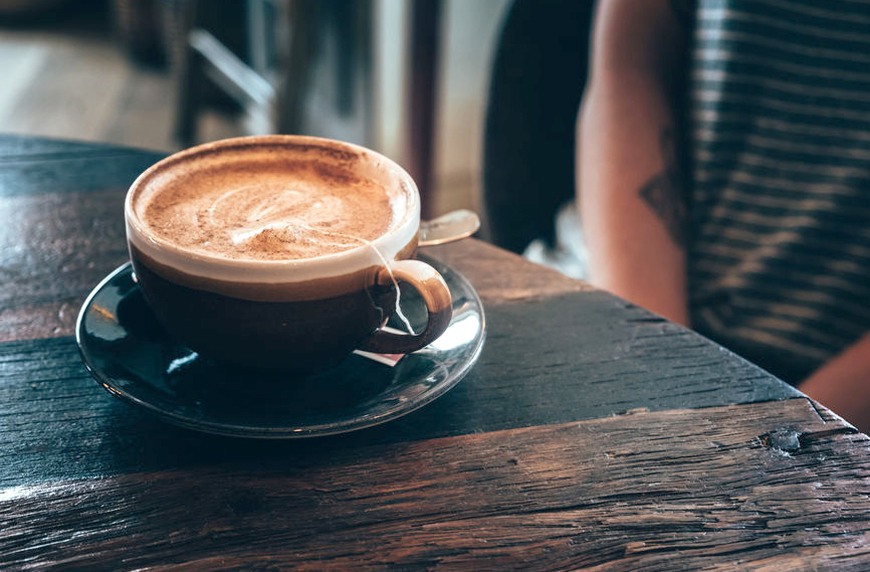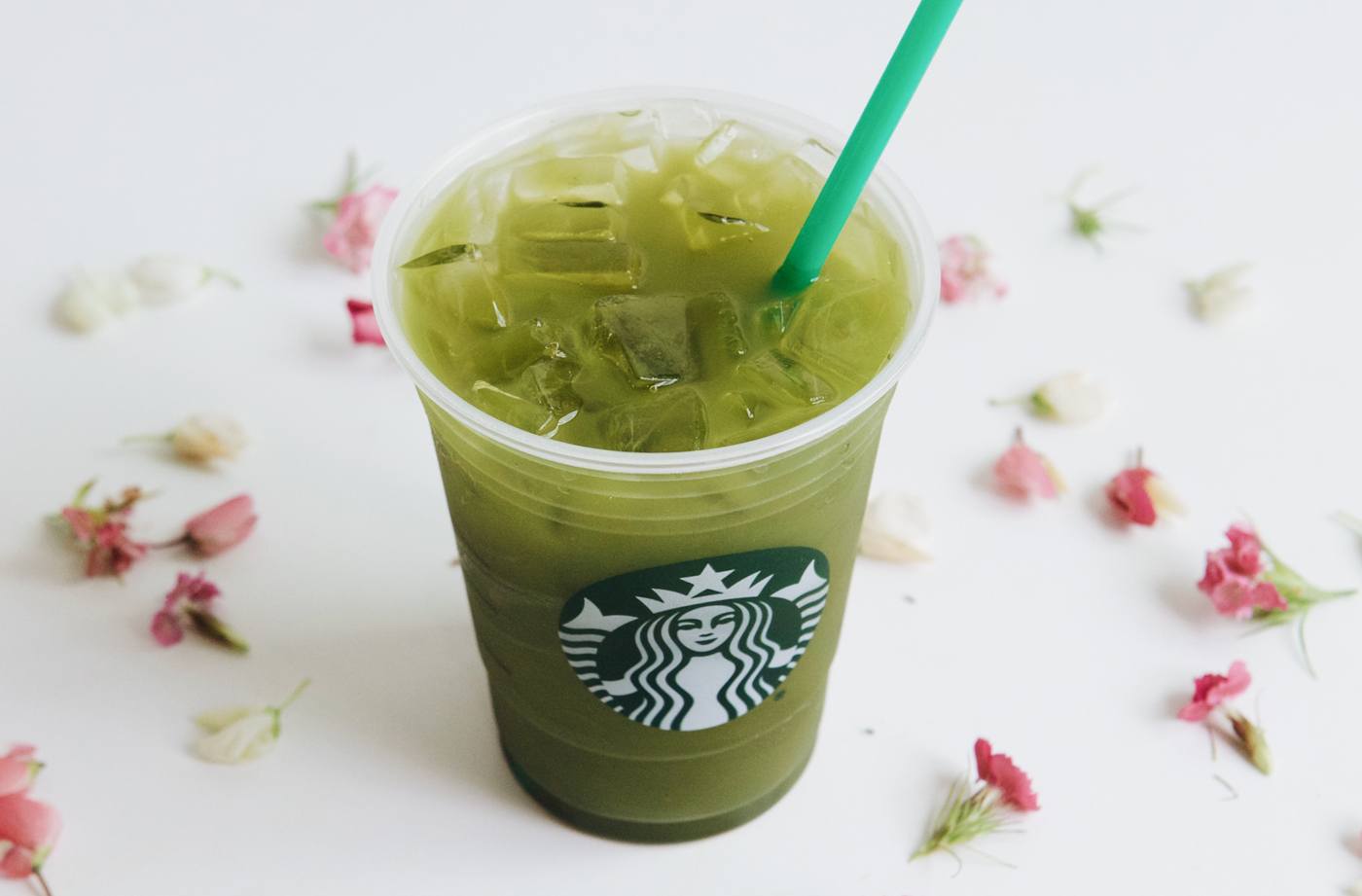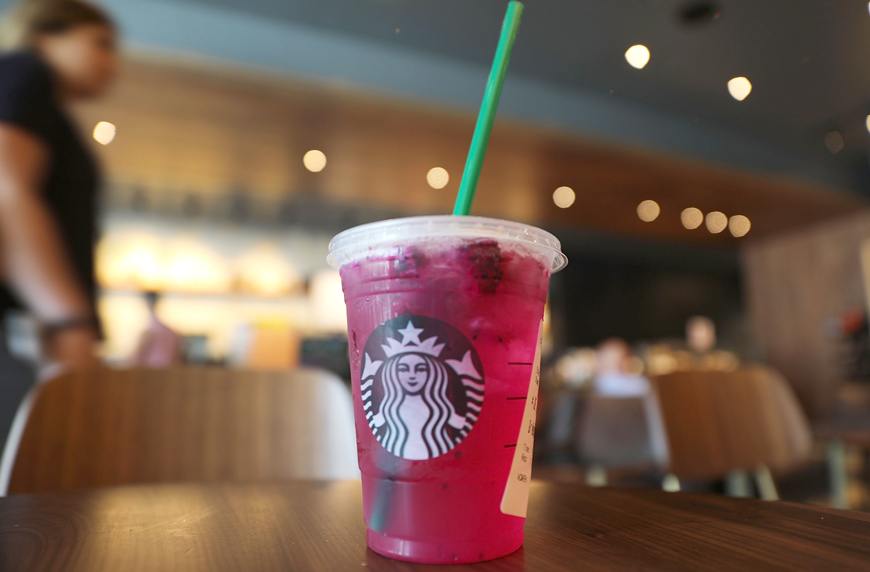These 4 Starbucks Drinks *Seem* Healthy, but Are They Really?
But as you grow up, so do your tastebuds. That's just as well, since instead of being blissfully unaware of the never-ending evils of sugar, you find out it's essentially the worst thing you can put into your body. Thankfully, Starbucks has a giant menu and customization is its thing. So your drink order evolves into matcha, almond milk, and low-sugar bevvies—all of which allow you to keep on living your healthiest life, right?
As someone who is just as much a latte-aholic as a health food reporter, I decided to dig a little deeper into the healthy-sounding options I routinely pat myself on the back for ordering. Armed with the ingredient lists laid out on Starbucks' site, I called up naturopathic doctor Nicole McCarter, ND, to find out exactly what's in four of the coffee chain's most popular teas and low-cal coffee drinks.
While you might be surprised by what she learned, there's a bright side: Starbucks reigns supreme when it comes to customizable drinks. That means you can absolutely get something healthy to sip on. It may just take a little more investigating than simply ordering something "skinny."

{{post.sponsorText}}
Find out what's in Starbucks' lower-sugar drinks—and if they are actually healthy.

Skinny Vanilla Latte
"Skinny" is Starbucks' codeword for a low-cal drink. To keep calories to a minimum, the skinny vanilla latte contains sugar-free vanilla syrup—an ingredient made up of water, natural flavor, maltodextrin, citric acid, xanthan gum, sucralose, and potassium sorbate.
Notice anything missing? Well, there's not actually any vanilla in the drink. When I ask McCarter if the "natural flavor" could actually be real vanilla, she's doubtful. "The problem with the term 'natural flavor' is that it's so vague. If Starbucks was using a high-quality ingredient like vanilla bean, they'd most likely list it," she says. And while all "natural flavors" must come from a plant or animal, they may also contain solvents, emulsifiers, and preservatives that aren't natural.
And that's not the only ingredient that gives McCarter pause. According to her, maltodextrin and sucralose are both sweeteners. "Maltodextrin just tastes a little less sweet than cane sugar and sucralose is the non-brand name for Splenda," she says. Predictably, she isn't into either one, saying they can spike blood sugar. The xanthan gum is used as a thickening agent, which McCarter says can cause digestive distress for some, while citric acid is a preservative she feels neutral about.
The verdict: "I actually am a fan of coffee, which is full of antioxidants," she says. "It’s just when the drinks are bloated with all these artificial things it becomes a problem." Her advice: Order a regular latte and bring your own vanilla stevia to mix in at the counter. Or, order a regular latte and sprinkle in cinnamon and nutmeg (both in shakers, next to the napkins) for some extra flavor. "Cinnamon and nutmeg are both great for stabilizing blood sugar and metabolism," she says. "That way you're adding flavor while actually giving the drink extra benefits."

Lightly Sweet Chai Tea Latte
Long before it was a trendy Starbucks order, chai tea—a blend of cardamom, black pepper, ginger, cinnamon, and cloves—was sipped in India. Still popular around the world, it's beloved in the health word for its inflammation-fighting powers.
Are you still getting the same benefits ordering the Westernized latte form? Check out the ingredients list of Starbucks's version: water, black tea, cardamom, black pepper, ginger, cinnamon, cloves, natural flavors, star anise, sugar, honey, ginger juice, vanilla, and citric acid. "Not bad!" McCarter says. "All of those spices are what you would find in a traditional chai tea."
The only ingredient that's problematic is the sugar. A grande lightly sweet chai tea latte with almond milk has 24 grams, only a gram less than the World Health Organization's recommended daily maximum.
The verdict: Ordering a chai brewed tea (zero sugar!) and adding your own unsweetened milk will drastically cut down on the sugar—and you'll still get to enjoy the flavor profile you're craving.

Matcha Green Tea Latte
There are only two ingredients in Starbucks' matcha blend—sugar and ground Japanese green tea—but that's one more ingredient than is ideal. A grande with almond milk has 21 grams of sugar: Five grams from the almond milk and the remaining 16 from the matcha blend. (To compare, a grande with coconut milk has 27 grams of sugar and a non-fat milk order has 33 grams.)
In McCarter's opinion, that high sugar content negates all of the health benefits we associate with matcha. "It's just so counterproductive to have all that sugar when you're ordering the drink for the antioxidants," she says.
The verdict: "I would recommend asking for a regular green tea bag, whether you're getting it hot or iced," McCarter says. "That way you're still having green tea, but it's without the sugar that's blended in."

Very Berry Hibiscus Starbucks Refresher
You know you've seen people at the gym sipping on this ubiquitous red iced tea. Hibiscus is known to be good for you, and there are actual blackberries floating around in it. All that makes this drink a healthy win, right?
Let's start with the not-so great news. Looking at the ingredients, there's actually no hibiscus in this drink at all—reminiscent of the no-vanilla vanilla latte. Also, the first ingredient (besides water) is, well, sugar. The second is white grape juice concentrate. "White grape juice concentrate tricks a lot of people, making them think it has real fruit," says McCarter. "But it's basically just fructose, which spikes blood sugar and insulin levels." So the first two ingredients are sugar. Then, there's the zero-calorie sugar alcohol, erythritol. This is a prime example of sugar splitting on labels—a tactic brands use to make you think there's less of the sweet stuff in a product than there actually is.
But this drink does have a few redeeming qualities, in the way of green coffee extract, ascorbic acid (aka vitamin C), and, of course, those luscious blackberries. "The green coffee extract is full of antioxidants and is also linked to boosting metabolism," McCarter says.
The verdict: In our expert's opinion, ordering the drink as-is with all the sugar outweighs any benefits it may have. For a truly healthy order, go for an iced green tea instead. That way, you'll be getting the antioxidants without the three different sweeteners. Oh, and don't forget that there's a whole healthy secret menu to order from—so there's absolutely no need to quit your Starbucks habit completely.
Here's everything you need to know about how coffee affects the body. Plus, this is how the caffeine levels vary in seven different sources.
Loading More Posts...